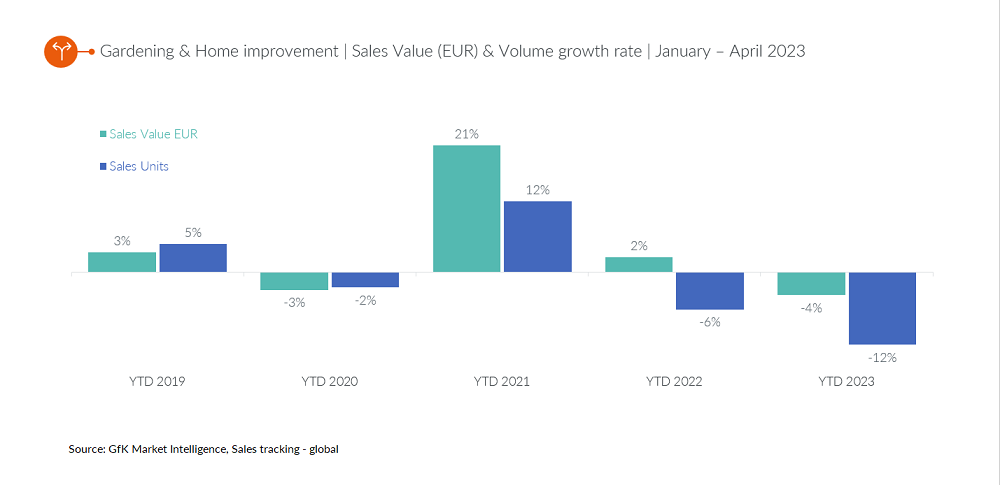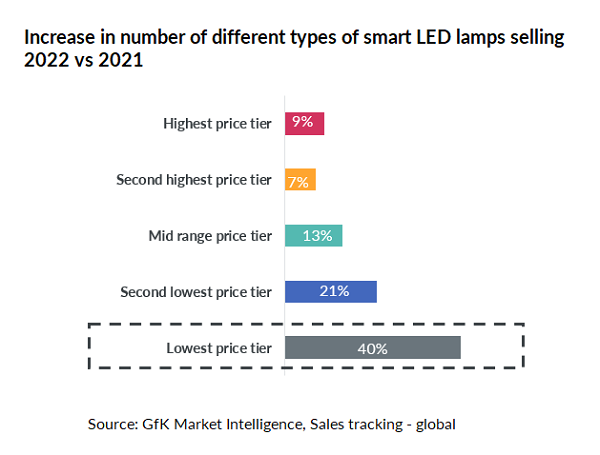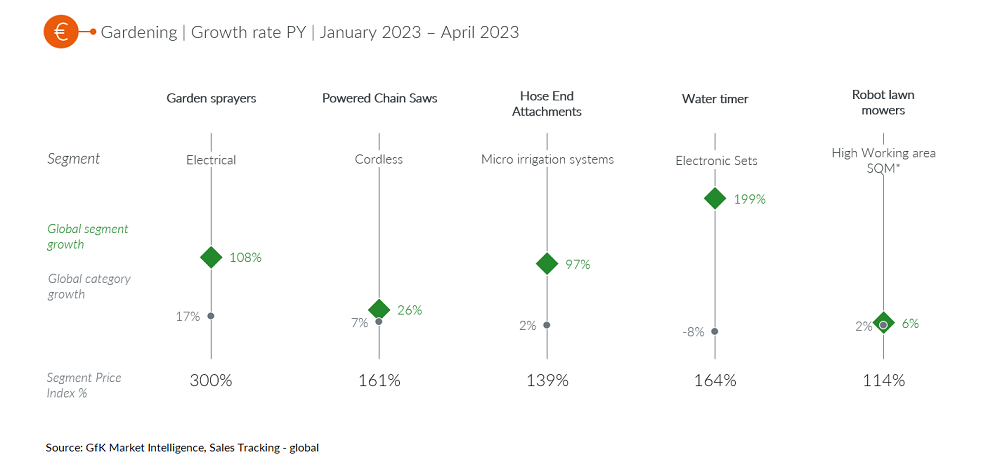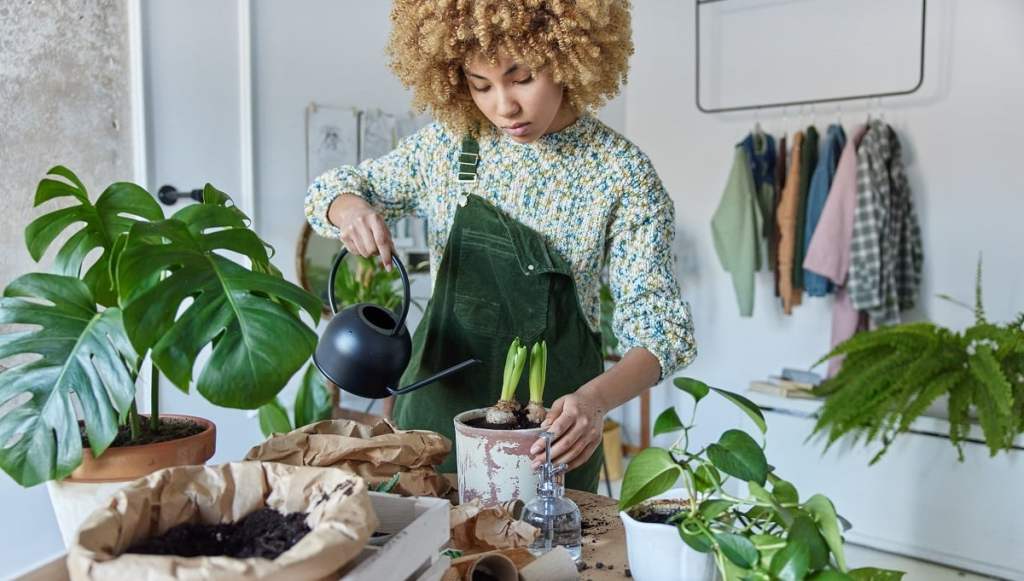Strategies to win shoppers, despite rising prices, through relevant and targeted product value.
Brand growth strategies within Gardening & Home Improvement must focus on consumers’ priority demands – high on the list of which are product convenience and sustainability. However, the appeal of product differentiation such as innovative tech or exclusive design, should not be overlooked, especially in categories with strong price competition.
—
The first third of 2023 saw a decline in both volume and value sales of total Gardening & Home Improvement. This slowdown was to be expected. After all, the pandemic years of 2020 and 2021 gave rise to unprecedented levels of home renovations, decoration, and garden work as people were forced to focus exclusively on their home environments.
Total sales in Gardening & Home Improvement volume (-12%) fell far more sharply than value (-4%) from January to April. This was due to rises in product prices, as brands and retailers passed on the impact of the increased cost of energy and raw materials.
Of course, not all brands passed on price rises equally. The extent to which brands can command higher prices for their products depends on many factors, from quality, to brand positioning and the ability to differentiate in highly saturated and competitive categories.
Divergence between value and volume continues mainly due to increased prices and inflation

The drivers now for households to undertake significant home projects are polarizing.
Some are driven by necessity, such as painting the walls before selling or moving out of a property – and, according to our very latest GfK Consumer Life data, just under half (45%) are likely to consider price to be the most important factor in their purchasing decision.
However, other consumers have a compelling personal desire to focus on their home, despite high interest rates, high inflation, and the re-emergence of competing calls for their discretionary spend, such as vacations and eating out. In fact, a third (34%*) of people globally are spending time once a week or more on home maintenance this year, up from 29% in 2019 or pre-pandemic.
To encourage more shoppers to purchase in the current market conditions and even upgrade into more premium ranges, brands and retailers must present a relevant and compelling product positioning that taps directly into consumers’ current priority wants and needs.
With the summer buying season in full swing, pockets of opportunity exist to appeal to even the most discerning and cost-conscious consumer throughout the remainder of 2023 and into 2024.

Opportunity #1 – Innovation and design
Manufacturers need to continuously invest in new technologies. Innovations can be so effective that consumers making that upgrade are set for years to come – thereby giving them considerable long-term value in return for the initial spend. Of course, this can be a downside for the brands behind these products.
Take LED lamps (light bulbs) for example. They have become the mainstream both at home and in most workplaces, accounting for 90% of all lamps sold. However, LED lamps last around ten times longer than the old incandescent bulbs, so the sales volume of LEDs has declined in recent years, as the market saturated and the replacement cycle is so long (little need to replace broken bulbs anymore).
The growth potential is now focused on smart bulbs. Whilst the smart lighting market is still small, the consumer appeal of these is extremely strong , playing to today’s very practical but aspirational drivers of convenience, enjoyment at home and energy saving (and therefore cost-saving). The challenge is that a smart LED light bulb is still at least 5 times the price of a regular LED bulb. Initially, brands struggled to increase penetration to the mainstream and not just the early adopters. Then a number of budget smart LEDs were launched to compete alongside the visually-rich marketing of the premium branded products. In fact, the number of different budget items selling increased by 40% in 2022. This has caused a decrease in the average price of smart LEDs overall as these budget products continue to gain market share. The lowest price tier now accounts for 53% volume share.

Differentiation is also an effective brand strategy in categories with high substitutability at product level. Emulsion paint accounts for 76% of the total volume of paint sales overall (and 64% of total revenue) and is dominated by longstanding iconic brands. Nevertheless, a brand launched several years prior to the pandemic in Eastern Europe managed to claw away share from the big players in the higher priced segments with its strong premium brand positioning and appealing visual social media presence. Similarly, a popular German brand offering designer colour options also performs well in the upper price segment, despite the current inflationary pressures on the category. In this case, higher prices can be justified when the offering is unique and aspirational enough.
Opportunity #2 – Convenience
Almost half of consumers (41%) agree or strongly agree that they are prepared to pay more for products that make their life easier*. We are already seeing products that are easy-to-use or that automate tasks, outperform the rest of their respective category.

For example, electronic water timers are growing +199% for the period January to April this year, whilst water timers as a category are in decline at -8%. Powered chain saws grew +7%, while the cordless models grew +26%. Even robot lawn mowers – a now established category offering high convenience saw +2% growth rate during January to April – and models covering a high square-metre area outperformed at +6% growth.
In most cases, these higher-convenience products also command a price premium – for example, robot lawn mowers at 114%.
The consumer can effectively do a pay-off equation of how much time and effort is saved, for example the robot lawn mower may save an elderly consumer money by not having to pay a gardener.
Being able to quantify the convenience advantages as seen from the perspective of the consumer is essential for pricing the product at the ‘sweet spot’ – giving it the premium it deserves, while still being acceptable to the consumer.
Convenient, easy to use and products that automate tasks outperform the category growth

Opportunity #3 – Sustainability
Eco-friendly products offer opportunity for premiumization within Gardening & Home Improvement. Despite the pressure on consumers’ wallets, 46% of shoppers globally still take environmental protection factors into account when deciding what to buy. Additionally, 73% of consumers claim to conserve energy at home (e.g. by using energy efficient products), an attitude which is up +3 points vs 2022.
The need for eco-friendly and energy efficient products has copious headroom to grow, and EU regulations around these areas will only steer the market further in the coming years.
The first four months of 2023 has seen eco-friendly products such as organic and natural growing media and fertilizers, or economic taps, increasing their share of segment value, or normalizing at high levels.
Eco-friendly H&L product shares increase or normalize at high levels


Summary
Volume demand across Gardening & Home improvement has had a subdued start to the year, however segments such as garden sprayers, electronic water timers, and cordless power tools have already showed greater potential for the summer sales period.
In order to reenergize sales volume and continue revenue growth, brands and retailers must convince consumers to spend their disposable income – which is already under pressure from the rising cost of living – on projects at home, instead of on that summer vacation abroad or new clothes.
Strategies and tactics with a higher chance of success with consumers involve meeting consumers’ priority needs and wants in the current inflationary market. A third of consumers regularly spend time on home maintenance – more than prior to the pandemic – and are therefore are still willing to spend. Convenience, eco-friendly alternatives and aspirational design can appeal to consumers at different budget levels, as shown by the recent examples. Whichever strategy is chosen, the value being delivered must validate the price tag, which, in these days, is often higher, rather than lower.
Do you want to get more information about the GfK Consumer Life study?
Footnote:
*Source: GfK Consumer Life, 2019- 2023.




